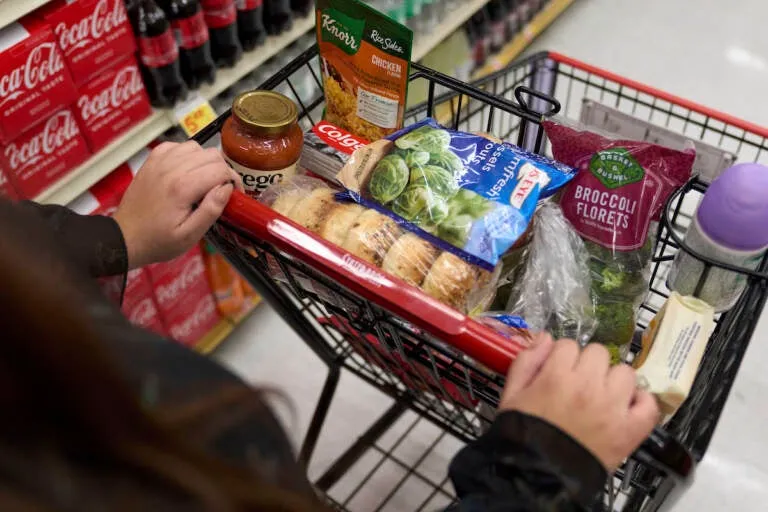One of the largest daily costs for individuals and families is food, and particularly grocery shopping. Regardless of whether you are in a large family of four or more or in a bachelor’s pad, the expenses while cooking are high.

With increasing prices, it is necessary to plan to start saving money on groceries while at the same time consuming healthy meals.
The good news is that groceries can be saved without much stress and without having to drastically change your lifestyle.
If you want to make some changes and save a large sum of money each month, then maybe it is high time that you cut your food expenses and support yourself.
What Makes Grocery Shopping Costly?
Food prices have been on the rise lately for various reasons or economic and social factors.
Factors such as inflation, supply chain interruptions, and shifts in demand all lead to the overall rise in the price of groceries.
These factors are beyond our control, but the amount we spend shopping is within our control.
Simply changing your management and shopping patterns, choosing your diet, and planning for meals can go a long way toward saving your money.
7 Excellent Tips on Saving Money on Groceries
As earlier said, the strategies of saving money from grocery shopping depend on the individuals since we can’t control the cost or prices of the foodstuffs and fresh foods we buy.
We can decide to save money from shopping by choosing how to spend, what is necessary, and buy. You can also follow these tips.
1. Plan Your Meals Ahead
The most effective way of cutting down on grocery bills is to plan for the week’s meals ahead.
If you make a habit of creating a shopping list then you rarely will make any unnecessary spending.
Begin with the development of a weekly diet to divide the day into breakfast, lunch, dinner, and in-between snacks.
Start with, what you already have in your pantry and refrigerator, so when preparing your grocery list, you will note down what you still need to purchase.
2. Prepare Your Shopping List—and Be Committed

After having a meal plan, come up with a more detailed shopping list. This list should have all need for the week.
When going to shop for groceries, make sure you shop according to your list and avoid buying anything outside your list except it’s a necessity.
Remain committed to your list and don’t be carried away to pick other items, even if there is a massive discount when you won’t need them for use in the next month or so.
3. Buy in Bulk (But Only When It Makes Sense)
Purchasing products in bulk is usually very economical, but one must do it wisely.
Not everything can be bought in large quantities and make a significant saving, more so for fresh produce that often goes bad.
Concentrate on things that are not perishable such as pasta, rice, canned goods and frozen foods as they can take longer before they expire.
Also, compare the price per unit so that you do not realize that you are actually buying a lot for more.
4. Shop Seasonal and Local
Some foods are cheaper when bought from the market, while others are cheaper when bought from the farm; therefore, it is advisable to take foods that are in season.
Fresh fruits and vegetables that are available during a particular season contain more nutrients, taste better, and are cheaper to buy.
Fresh fruits and vegetables can easily be purchased from farmers in local farmers’ markets and, in most cases, cheaper than branded stores, especially towards the close of the business day.
5. Use Coupons and Store Loyalty Programs
Use coupons for reducing the prices on your food products and other things that groceries offer and which you are a member of.
A majority of grocery stores have the feature of digital coupons that exist in their apps, or they have bonus coupons for the regular customers.
Loyalty cards enrollment also gives the customer points that they use to shop for free foods or even get discounts on the next purchase.
6. Buy Generic Brands
Another way to reduce the expenses on groceries is to stop buying the expensive branded products and instead go for the cheap versions that act as substitutes for the branded products.
These products are normally produced by different manufacturers from the original equipment manufacturers but are cheaper.
Often, the eating qualities, as well as the quality in general, are actually attributed to the better brands.
7. Avoid Prepackaged and Processed Food

Processed foods like the pre-washed salad, ready-to-eat fruits, or the defrosted meals are easy to prepare but very expensive.
In as much as possible, ensure that you purchase whole foods which you can then process by yourself.
It may take a little more time to cook food, but the amount of money that is to be spent can be saved considerably if food is prepared at home.
A whole chicken costs less per pound than the chicken breast, or chopping vegetables yourself is way cheaper than buying them precut.
8. Buy from Outer Shelves of the Store
Supermarkets are planned to facilitate purchases and due to this many of the processed and costly foods are placed in middle shelves.
Another thing that should be discouraged is the act of ‘window shopping’; confine yourself to the frozen and chilled products that are mostly found on the perimeter of the store.
These are what one needs when preparing healthy meals while at the same time sticking to the preferred budget.
Advised food is in mid-section areas like snacks and processed foods and sugary drinks, they have high costs and are unhealthy.
9. Cook at Home
Preparation of food at home is one of the most effective strategies for cutting the expenses of food.
You spend a lot of money every time you decide to dine out or order some food from a takeaway.
Preparing meals at home is one way of cutting down costs since you are in a position to control the type of foods that are used as well as the portions that are served.
This is another great way of saving here is by preparing portions that will be more than enough to have the remainder the next day.
They can be taken for lunch the following day or even prepared in another dish say chicken salad from the roasted chicken of the previous night.
Does Loyalty Programs Save Money?
Loyalty programs are a cost-effective method of shopping for groceries, as shoppers get to enjoy special offers, discounts, and privileges for being loyal to a store or brand.
Grocery stores such as Kroger, Safeway, and Target offer loyalty cards, which allow holders of special and personalized vouchers with loyalty points that are redeemable to get products free or get a discount on future prices.
Costco also gives bulk discounts and required paid membership, while Albertsons and Whole Foods give extra fuel rewards and special promotions based on the consumers’ shopping patterns.
Shoppers should therefore enroll in the various programs offered in the stores and also use the digital coupons besides adopting promotional days such as double points’ days.
These are to assist shoppers in cutting down grocery expenses and find ways on how to shop for groceries effectively.
Final Words
It is all about planning how to get groceries, how to choose the proper market and make the right decisions.
With proper meal planning, avoiding impulse buying, and by following the money-saving tips, you can cut down your food bill yet provide your family with healthy and tasty meals.
They do not happen immediately, but it takes time to adjust, especially when you aren’t used to it.
As said before, the key ingredient is consistency when implementing interventions for children at risk.
These tips should be followed every time you are planning to do some shopping, and it is not very hard to note that a small change can bring about a big difference.





